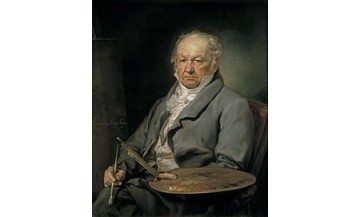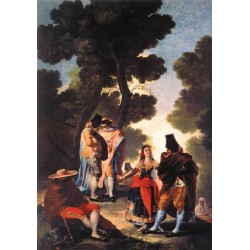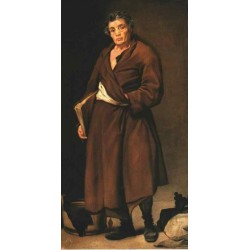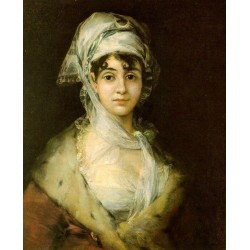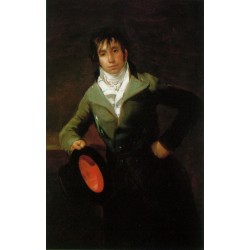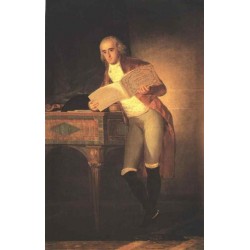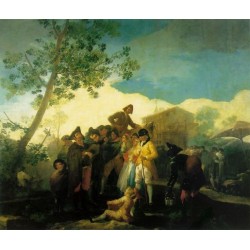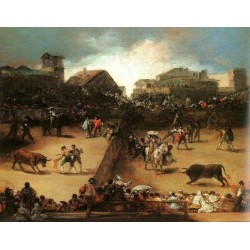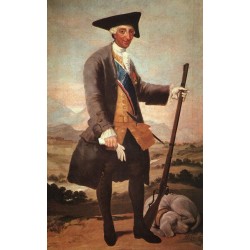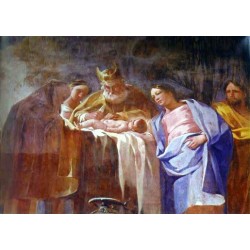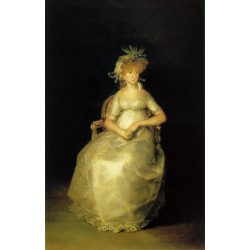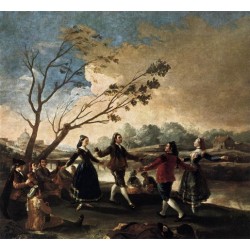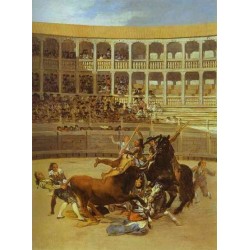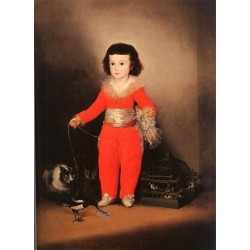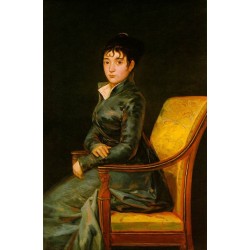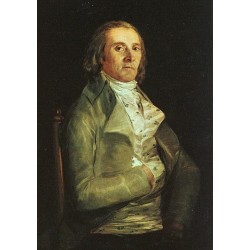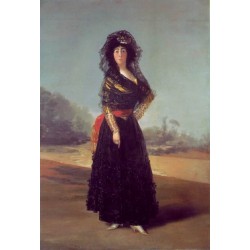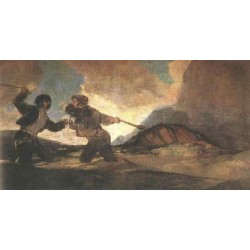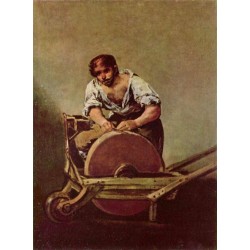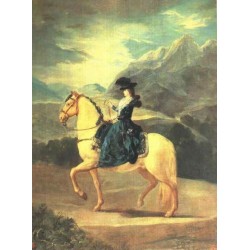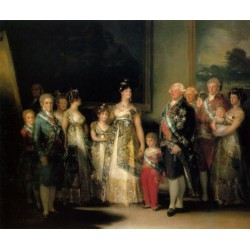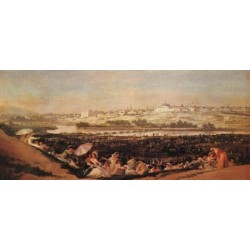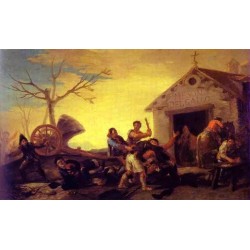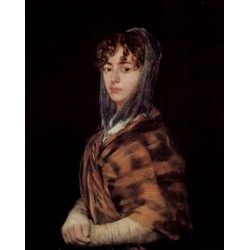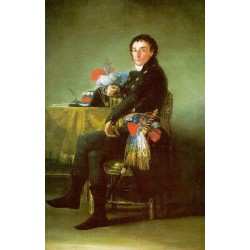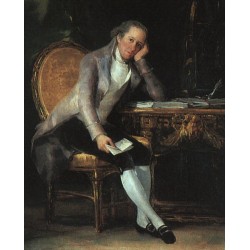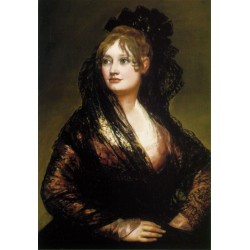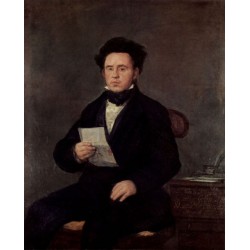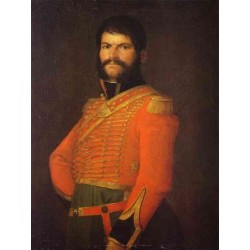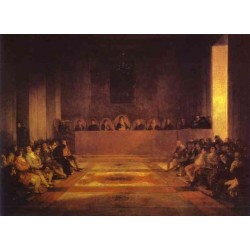Goya
Francisco de Goya Biography
Sometimes he is called the father of modern art, Spanish artist Francisco de Goya painted amazing royal portraits as well as more subversive works in late 1700s and also in early 1800s.
Synopsis
A real famed painter in his own lifetime, Francisco de Goya was born on the 3oth of March, 1746, in Fuendetodos, Spain.
He began...
Francisco de Goya Biography
Sometimes he is called the father of modern art, Spanish artist Francisco de Goya painted amazing royal portraits as well as more subversive works in late 1700s and also in early 1800s.
Synopsis
A real famed painter in his own lifetime, Francisco de Goya was born on the 3oth of March, 1746, in Fuendetodos, Spain.
He began his art studies as a youngster and even hung out in Rome, Italy, to advance his skills. In 1770s, Francisco Goya began to figure for Spanish royal court. additionally to his commissioned portraits of the nobility, he created works that criticized the social and political issues of his era.
Early Years
The son of a guilder, Francisco Goya spent a number of his youth in metropolis. There he began learning painting round the age of fourteen. He was a student of José Luzán Martínez. At first, Francisco Goya learned by imitation. He traced the works of nice masters, finding inspiration within the works of such artists as Diego Rodríguez Delaware timber y Diego Rodriguez de Silva y Velazquez and Rembrandt van Ryn van Rijn.
Later, Francisco Goya moved to national capital, wherever he visited work with brothers Francisco and Ramón Bayeu y Subías in their studio. He sought-after to more his art education in 1770 or 1771 by traveling to Italy. In Rome, Francisco Goya studied the classic works there. He submitted a painting to a contest command by the Academy of Fine Arts at Parma. whereas the judges likeable his work, he did not win the highest prize.
Goya and also the Spanish Court
Through the German creative person Anton Raphael Mengs, Francisco Goya began to produce works for Spain's royalty. He 1st painted tapestry cartoons, that were artworks that served as models for woven tapestries, for a mill in national capital. These works featured scenes from way of life, like "The Parasol" (1777) and "The Pottery Vendor" (1779).
In 1779, Francisco Goya won a briefing as a painter to the royal court. He continuing to rise in standing, receiving admission into the academy of San Fernando the subsequent year. Francisco Goya began to ascertain a name as a portrait creative person, winning commissions from several in royal circles. Works, like "The Duke and noblewoman of Osuna and their Children" (1787-1788), illustrate Goya's eye for detail. He skillfully captured the tiniest components of their faces and garments.
Illness
In 1792, Francisco Goya became utterly deaf once laid low with AN unknown malady. He began to work on non-commissioned paintings throughout his recovery, as well as portraits of girls from all walks of life. His vogue modified somewhat similarly.
Continuing to thrive professionally, Francisco Goya was named the director of the academy in 1795. He might are a part of the royal institution, however he didn't ignore the plight of the nation in his work. Turning to etchings, Francisco Goya created a series of pictures known as "Los Caprichos" in 1799, that has been viewed his statement on political and social events. The eighty prints explored the corruption, greed, and repression that was rampant within the country.
Even in his official work, Francisco Goya is believed to possess solid a vital eye on his subjects. He painted the family of King Charles IV around 1800, that remains one amongst his most illustrious works. Some critics have commented that this portrait perceived to be additional a caricature than a realist portrait.
Goya conjointly used his art record moments of the country's history. In 1808, France, semiconductor diode by general, invaded European country. Napoleon put in his brother Joseph because the country's new leader. whereas he remained a court painter beneath Napoleon, Francisco Goya created a series of etchings portrayal the horrors of war. once Spanish royalty regained the throne in 1814, he then painted "The Third of might," that showed to verity human prices of war. The work portrayed the conflict in national capital against French forces.
Final Years
With Ferdinand VII currently in power, Francisco Goya unbroken his position within the Spanish court despite having worked for Joseph the Little Corporal. Ferdinand reportedly once told Francisco Goya that "You should be garroted, however you're an excellent creative person therefore we have a tendency to forgive you." Others in European country weren't therefore lucky because the king sought-after to quelling on liberals World Health Organization sought-after to create the country a constitutional state.
Despite the private risks, Francisco Goya expressed his discontent with the Ferdinand's rule a series of etchings known as "Los disparates." These works featured a carnival theme and explored folly, lust, old age, suffering and death among different problems. along with his grotesque imaging, Francisco Goya perceived to illustrate the absurdity of the days.
The political climate later became therefore tense that Francisco Goya volitionally went into exile in 1824. Despite his poor health, Francisco Goya thought he could be safer outside of European country. Francisco Goya moved to Bordeaux, France, wherever he spent the rest of his life. throughout now, he continuing to color. a number of his later works enclosed portraits of friends conjointly living in exile. Francisco Goya died on April sixteen, 1828, in Bordeaux, France.
Personal Life
Goya married Josefa Bayeu y Subías, the sister of his art academics Francisco and Ramón Bayeu y Subías. The couple had one kid World Health Organization lived to be AN adult, their son Saint Francis Xavier.
